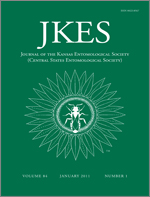Nest entrance complexes of the meliponine Pariotrigona klossi Schwarz were studied on a limestone rock face in S Thailand. Unique in several aspects, a complex consisted of several coral-like clumps, all interconnected by roofed conduits. Inside these conduits, which were firmly attached to the substrate, the bees crawled on bare rock. The clumps were composed of dozens of entrance tubelets of up to 10 cm long, 2.5–6 mm wide, ornamented with radially arranged, 1–7 mm long, often branched, strings of crystal-clear beads of resin. Connection to the nest was through a fissure in the rock via a hard resin tube connected to the roofed conduits. Generally only one worker bee occupied an entrance (opening gap 2–3 mm). Such architecture gives protection against ant and bee raiders, and at the same time allows simultaneous multiple landings for bees of populous nests. Pariotrigona klossi was innocuous even when a tubelet was destroyed, but breaking into the roofed conduits near the rock fissure caused a small group of workers to attack the intruder by pinching bites and unpleasant odor. At least 13 species of stingless bees were found to be calcicolous 0.5–20 m above the ground in S, W and N Thailand, limestone hollows being a new nesting location additional to the 10 types already known. Compared to arboricolous nesting, calcicolous habits allow larger and more permanent dwellings safer from falling debris, inclement weather, fire, and bears. Most species were facultative calcicoles already known as arboricoles. Whether in limestone or trees, the nest entrance architecture characteristic for each of the facultative calcicole species was essentially the same. Yet P. klossi and four Lepidotrigona taxa appear to be either obligate calcicoles or, if also arboricoles, to construct different entrances on limestone than on trees. The unusually complex nest entrance elaboration in P. klossi and the extreme length – up to 158 cm – of the alpenhorn-like, pendulous entrance tube of four taxa of Lepidotrigona appear ill-fitted for trees.
How to translate text using browser tools
1 January 2011
The Remarkable Nest Entrance of Tear Drinking Pariotrigona klossi and Other Stingless Bees Nesting in Limestone Cavities (Hymenoptera: Apidae)
Hans Bänziger,
Supalak Pumikong,
Kanok-orn Srimuang
ACCESS THE FULL ARTICLE
Arboricole
calcicole
defensive strategy
limestone endemics
Meliponini
multiple entrances
nest entrance architecture





